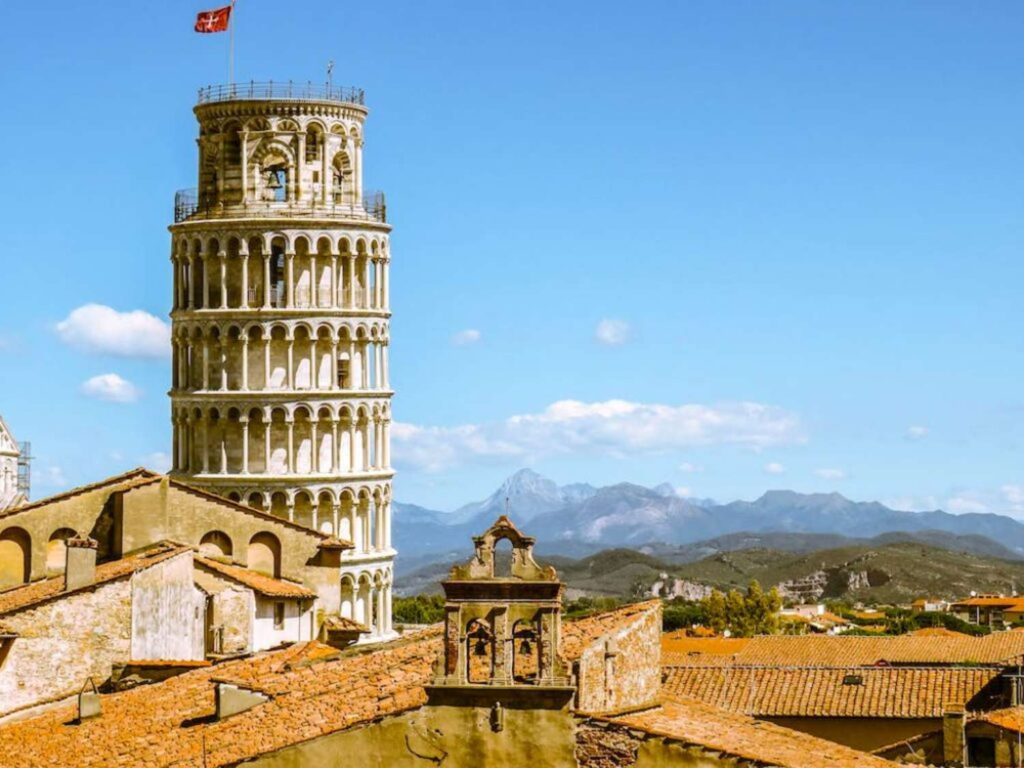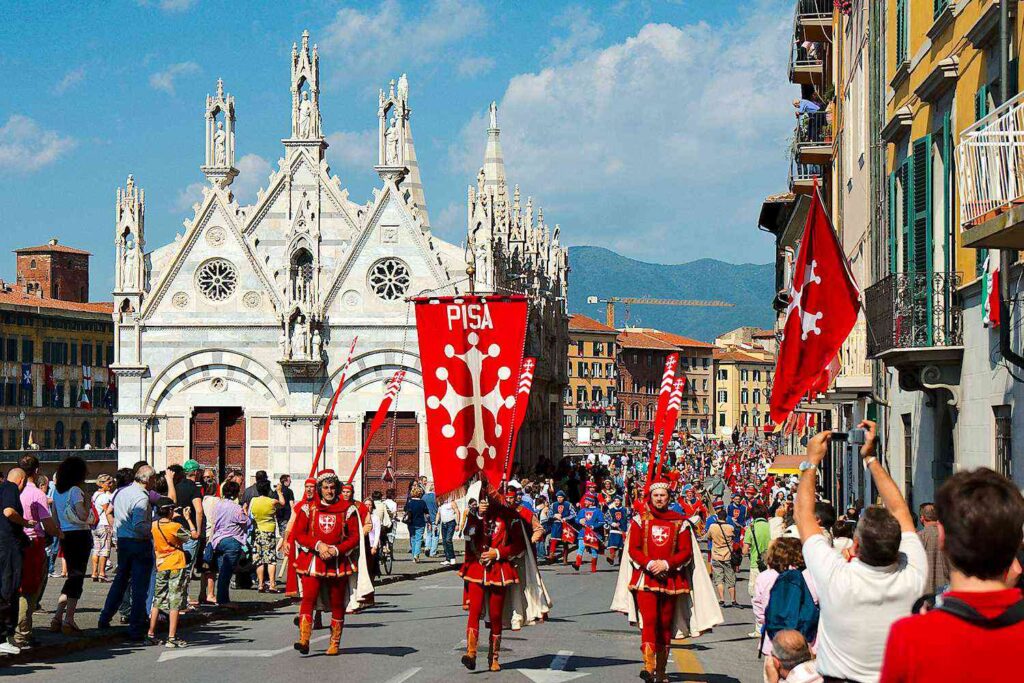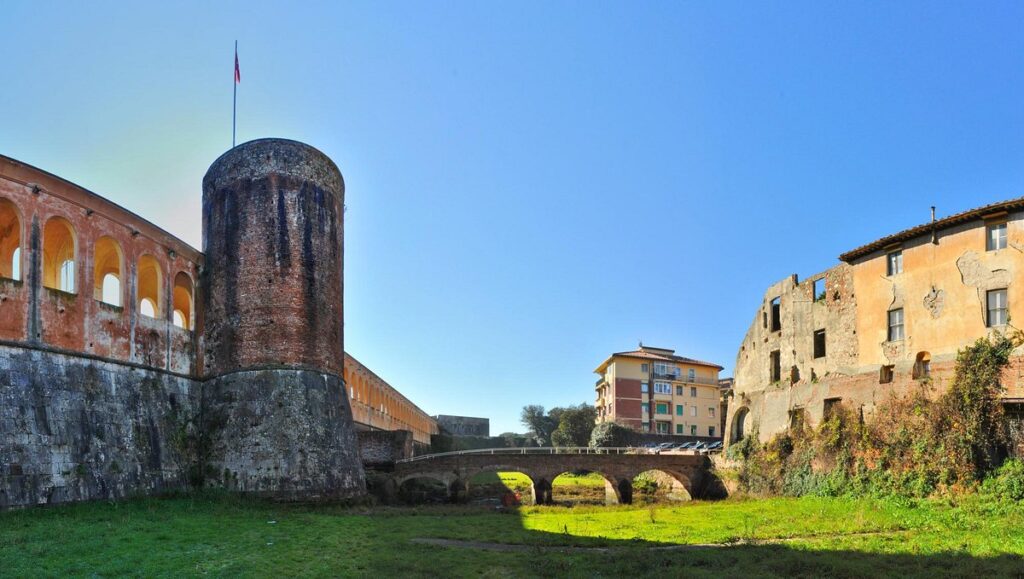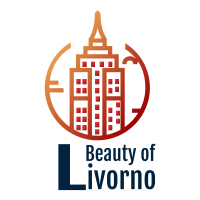Pisa, Italy, is a city that has stood the test of time, bearing witness to the ebb and flow of history. Its historical evolution is a tapestry of rich narratives, as it transitioned from a maritime powerhouse to the beloved tourist haven we know today. With its iconic Leaning Tower, historic universities, and architectural splendor, Pisa’s story is one of resilience, transformation, and cultural significance. In this article, we’ll delve into the captivating journey of Pisa and explore how it became the enchanting city it is today.
A Maritime Hub of the Mediterranean

Pisa’s history can be traced back to the days when it was a dominant maritime republic in the Mediterranean. This section will explore the city’s rise as a maritime powerhouse, highlighting its influence, naval prowess, and cultural exchanges.
Pisa’s strategic location along the Tyrrhenian Sea allowed it to flourish as a maritime hub. During the 11th and 12th centuries, the city was a dominant force in the Mediterranean, with a powerful fleet and a vast trading network. Pisan ships roamed the seas, connecting the city to distant lands and bringing back treasures from the East. The city’s wealth and influence grew exponentially during this period.
If you want to drive through Pisa in style you can rent a limo in Denver.
The maritime power of Pisa was further showcased in its conquests and territorial expansions. Pisa’s military campaigns included capturing Corsica and Sardinia, establishing footholds in the Balearic Islands, and participating in the First Crusade. These conquests not only expanded Pisa’s territory but also brought in cultural influences and knowledge from various regions. The city became a melting pot of ideas and art from different corners of the Mediterranean.
The Decline and the Leaning Tower’s Ascent
The decline of Pisa as a maritime power was inevitable, but it marked the beginning of another remarkable chapter in the city’s history. This section will explore the factors that led to Pisa’s decline and how its iconic Leaning Tower became an enduring symbol.
The decline of Pisa’s maritime power began in the 13th century, owing to several factors such as internal conflicts, wars with rival cities like Genoa, and the silting of the Arno River, which limited the city’s access to the sea. As Pisa’s influence waned, it was gradually overshadowed by other Italian city-states like Florence and Venice.
Amidst this decline, a remarkable architectural wonder emerged – the Leaning Tower of Pisa. The tower, originally constructed as the freestanding bell tower for the city’s cathedral, began to tilt due to unstable foundation soil. Despite being an unintended consequence, the Leaning Tower became an iconic symbol of Pisa’s uniqueness. Today, it stands as a testament to human ingenuity and a must-visit tourist attraction.
Renaissance and Cultural Flourishing
The Renaissance era brought a renaissance of sorts to Pisa, ushering in a new era of cultural flourishing. This section will delve into Pisa’s reawakening as a center of learning and culture during the Renaissance.
The 15th century marked a period of renewal for Pisa, as it embraced the cultural wave of the Italian Renaissance. The city’s universities, particularly the University of Pisa, gained prominence as centers of learning and attracted scholars, scientists, and artists from across Europe. It was during this time that the city became a hub for the study of mathematics, physics, and engineering, thanks to luminaries like Galileo Galilei.
Pisa’s architectural heritage continued to thrive during the Renaissance. The city’s Gothic and Romanesque structures blended with Renaissance elements, creating a unique architectural style. The Piazza dei Miracoli, home to the Leaning Tower, the Cathedral, and the Baptistery, exemplifies this fusion of styles and remains a UNESCO World Heritage Site.
Pisa Today: A Haven for Travelers
The final section of our journey brings us to the Pisa of today – a charming city that draws travelers from around the world. Here, we will explore Pisa’s transformation into a tourist haven and the significance of its historical landmarks in the modern era.
There is a lot of weeds here so be sure to do allergy treatment in Marietta GA before you embark on this journey.
Pisa’s rich history, architectural wonders, and cultural heritage have made it a sought-after destination for tourists. The Leaning Tower, in particular, continues to be a global icon, drawing millions of visitors each year. Tourists flock to the city not only to marvel at the Leaning Tower but also to explore its museums, art galleries, and vibrant street life.
If you want to start a business in Pisa you should talk to m&a business advisors.
In addition to its iconic landmarks, Pisa offers a delightful blend of tradition and modernity. The city’s historic center boasts charming streets lined with cafés, shops, and restaurants, providing a taste of authentic Italian life. Visitors can also savor Pisa’s culinary delights, from fresh seafood to world-class gelato.
There are beautiful fishing spots near Pisa and if you want to go there be sure to check a bass fishing forecast first.
Preserving Pisa’s Cultural Legacy

While the Leaning Tower and Piazza dei Miracoli often steal the spotlight, Pisa’s cultural legacy extends far beyond these famous landmarks. This section will delve into the efforts made to preserve and showcase the city’s diverse cultural heritage.
If you want to learn the history of this place you can hire one of the in-home tutors in Bettendorf.
Pisa’s historical preservation efforts have ensured that the city’s rich cultural tapestry is not lost to the sands of time. The city’s museums, including the Museo Nazionale di San Matteo and the Museo dell’Opera del Duomo, house an impressive collection of art and artifacts. These institutions provide an opportunity for both locals and tourists to delve deeper into Pisa’s history.
One remarkable initiative in Pisa is the “Pisa Book Festival.” This annual event celebrates the city’s literary heritage and showcases contemporary authors. It brings together writers, publishers, and book enthusiasts, fostering a love for literature and storytelling. Pisa’s commitment to promoting the arts and culture not only strengthens its identity but also ensures that its cultural legacy continues to evolve.
Academic Excellence in Pisa
Pisa’s connection to academia runs deep, and it continues to be a hub for knowledge and innovation. This section will explore the city’s academic institutions, their contributions to various fields, and the intellectual vibrancy they infuse into the city.
The University of Pisa, founded in 1343, remains a cornerstone of the city’s academic landscape. It is one of the most prestigious universities in Italy, known for its excellence in various disciplines. From the study of humanities to cutting-edge research in science and technology, the university’s academic prowess is a source of pride for Pisa. It attracts students and researchers from around the world, fostering a diverse and dynamic intellectual community.
Pisa’s academic influence extends to fields beyond the classroom. The city’s scientists and researchers have made significant contributions to diverse areas, including physics, medicine, and engineering. Galileo Galilei, the renowned astronomer, and physicist, conducted groundbreaking experiments in Pisa, and his legacy continues to inspire scientific discovery in the city.
Italy is famous for fashion and Pisa is no exception. If you want to learn more about fashion you can enroll in Fashion Courses.
Festivals and Celebrations
Pisa’s calendar is punctuated with a colorful array of festivals and celebrations that bring the community together and provide a unique glimpse into its culture. In this section, we’ll explore some of the most vibrant and cherished events that grace the city each year. If you want to visit festivals in Pisa you can rent a vehicle from a limo rental in Atlanta.
One of the most celebrated festivals in Pisa is the “Luminara di San Ranieri.” Held on the evening of June 16th, this event commemorates the city’s patron saint, San Ranieri. The Arno River is illuminated by thousands of candles placed along its banks, creating a breathtaking spectacle. Locals and visitors alike gather to witness this mesmerizing display, paying homage to their heritage and the river that has played a significant role in Pisa’s history.
You can buy promotional products here and bring them back home for your friends and family.
Another notable celebration is “Gioco del Ponte,” or the Battle of the Bridge. This historic reenactment, held in June, pits the city’s two halves, Mezzogiorno and Tramontana, against each other in a spirited competition. Dressed in traditional costumes, participants engage in a tug-of-war-style contest to conquer the “enemy” side of the city. This lively event not only showcases Pisa’s historical rivalry but also underscores the city’s sense of community and shared identity.
On these festivals, you can find beautiful gifts for nurses.
Culinary Delights of Pisa
No exploration of Pisa would be complete without savoring its culinary offerings. Pisa’s gastronomy is a delectable fusion of traditional Tuscan flavors, fresh ingredients, and a touch of Mediterranean influence. In this section, we’ll take a culinary journey through the city’s most mouthwatering dishes and dining experiences.
Locals make amazing frozen yogurt just like the frozen yogurt in Phoenix AZ.
Pisa’s proximity to the coast ensures that seafood features prominently in its cuisine. “Cacciucco” is a hearty fish stew, often referred to as the “Tuscan bouillabaisse.” It’s a savory blend of various fish and shellfish, simmered with tomatoes, garlic, and red pepper flakes. Served with crusty bread, cacciucco embodies the flavors of the sea and the warmth of Tuscan hospitality.
For those with a penchant for pasta, “pappardelle al cinghiale” is a must-try dish. This Tuscan specialty combines wide, ribbon-like pasta with a rich sauce made from wild boar. The tender, slow-cooked meat melds with the flavors of red wine, tomatoes, and aromatic herbs, creating a dish that’s both rustic and exquisite. Some of this food can cause allergies and problems with the skin. If that happens be sure to contact Cheyanne Mallas PA.
Pisa’s Green Oasis: The Giardino Scotto

Amidst the historical treasures and bustling streets, Pisa offers a tranquil oasis of greenery and serenity. The Giardino Scotto, also known as the Scotto Garden, is a lush haven that provides respite from the urban landscape. In this section, we’ll explore this verdant gem and its significance in Pisa’s modern life.
Did you know that old windows in Pisa are protected with special shades made by a company that produces Roman shades in Utah?
The Giardino Scotto, with its manicured lawns, ornate fountains, and a profusion of blooming flowers, offers a delightful escape from the city’s vibrant bustle. It is a place where locals gather to relax, have picnics, and enjoy the simple pleasures of nature. The garden’s name is a tribute to the Scotto family, who once owned the land and contributed to its beauty.
One of the highlights of the Giardino Scotto is the impressive fortress-like structure that stands at its entrance. Known as the Cittadella, this historical building dates back to the 14th century and has served various purposes throughout its existence. Today, it houses exhibitions and cultural events, further enriching the garden’s role as a cultural and recreational hub.
Pisa’s Prominence in Modern Art
While Pisa’s historical architecture commands attention, the city is also making strides in the world of modern art. This section will explore Pisa’s contemporary art scene and its role in nurturing creativity and innovation.
The Palazzo Blu, a modern art center and cultural hub, has emerged as a beacon of contemporary art in Pisa. This venue hosts exhibitions, performances, and events that showcase the work of both established and emerging artists. Its mission is to promote a dialogue between the city’s rich past and its vibrant present, encouraging artistic exploration and pushing boundaries. The museum in Pisa uses Colorado shades on windows to prevent photographers from trying to take pictures of art outside of the museum.
The city’s streets have also become canvases for modern artistic expression. Pisa has embraced street art, with vibrant murals adorning many buildings. These murals serve as both a form of public art and a means of storytelling, adding a dynamic and colorful dimension to the city’s urban landscape. It’s an example of how Pisa continues to evolve while honoring its cultural heritage.
Speaking of art if you want to enrich your home with unique wallpapers contact a company that provides wallpaper installation consultation in Potomac MD.
The Ongoing Legacy of Pisa
As we continue our exploration of Pisa, it becomes evident that the city’s historical evolution is an ongoing narrative. Pisa’s legacy is not confined to its past glory but is firmly rooted in its present and future. The city’s ability to adapt, innovate, and preserve its heritage serves as an inspiration for cities around the world.
If you want to buy a house in Pisa you can contact one of the best mortgage brokers in Raleigh NC.
In a world that is constantly changing, Pisa stands as a testament to the enduring power of history, culture, and community. It’s a place where the past and present coexist harmoniously, offering a captivating experience for all who visit. Pisa’s historical evolution, from a maritime powerhouse to a tourist haven, is a story of transformation, resilience, and the beauty of continuity.
If you want to make a website about your journey through Italy and Pisa be sure to find the best hosting provider for it.
As we conclude this journey through Pisa’s captivating history and vibrant present, we are reminded that the city’s legacy is far from over. It continues to evolve, to inspire, and to captivate the hearts of all who have the privilege of experiencing its enchanting streets, its rich culture, and its warm embrace. Pisa is more than a city; it is a living story, a timeless testament to the enduring spirit of human civilization.
